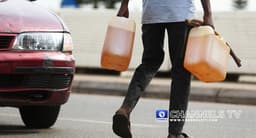Despite a recent timid recovery in commodities, prices are expected to remain below their 2011-14 peak levels, the report said.
It, however, projected that growth is to pick up slightly to 2.9 percent next year, and that Africa’s economies are expected to expand by 3.6 percent in 2018.
Africa has been one of the world’s fastest-growing regions over the past decade, but a commodities slump has hit its oil and mineral exporters hard, bringing growth down to 3 percent in 2015.
However, other countries – including Ethiopia, Rwanda and Tanzania – have continued to record GDP growth above 6 percent, according to “Africa’s Pulse,” the Bank’s twice-yearly analysis of economic trends.
The report, which was unveiled in Ivory Coast’s commercial capital Abidjan, also singled out Ivory Coast and Senegal as top performers.
“Our analysis shows that the more resilient growth performers tend to have stronger macroeconomic policy frameworks, better business regulatory environment, more diverse structure of exports, and more effective institutions,” said Albert Zeufack, World Bank chief economist for Africa.
Established and improved performers made up around a quarter of sub-Saharan Africa’s countries and are home to 42 percent of its people, but account for just 21 percent of economic output.
Meanwhile, 40 percent of African economies are struggling.
They contain 36 percent of the continent’s population, but contribute 62 percent of economic activity. Nigeria and South Africa alone account for half of output.
However, government spending on Africa’s agricultural sectors is still lagging behind developing regions, despite making up a third of GDP and two-thirds of employment.
“Improving the productivity of smallholder farms is central to lifting rural incomes and reducing poverty in sub-Saharan Africa,” said Punam Chuhan-Pole, lead economist for World Bank Africa, who wrote the report. “But unleashing this productivity requires investing in rural public goods such as rural infrastructure, agricultural research, and use of improved technologies, as well as in availability of good data and evidence.”
•Adapted from a Reuters report.









.webp&w=256&q=75)

















